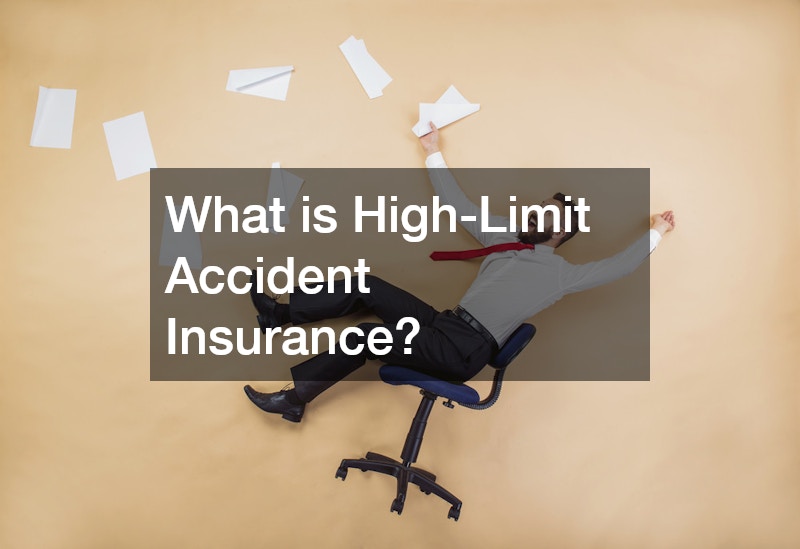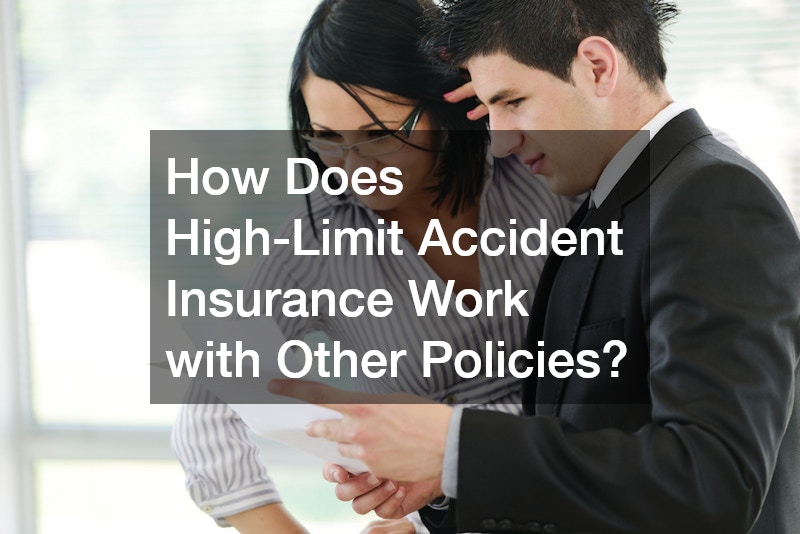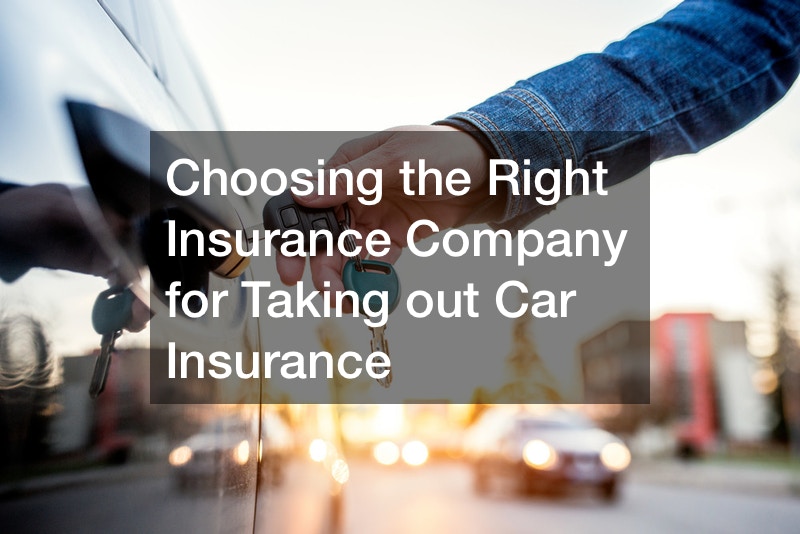
Accidents are an unfortunate reality of life, and their aftermath can lead to significant financial strain if you’re not adequately prepared. While many people rely on basic insurance policies to handle medical emergencies, these often fall short when it comes to severe accidents with substantial costs. High-limit accident insurance steps in to fill this critical gap. It offers enhanced protection by covering a broader range of expenses and higher financial payouts, helping individuals and families stay financially secure during recovery. Whether it’s a devastating injury from a car crash or a fall while hiking, this insurance can provide peace of mind by ensuring your needs are met without depleting savings or going into debt.
For families dealing with ongoing financial responsibilities, this type of insurance becomes even more crucial. It not only helps cover medical bills but also assists with associated expenses like rehabilitation, transportation, and even adjustments to your home, like installing safety signs or modifying a bathroom for accessibility. Beyond healthcare, it also complements existing policies such as flood insurance coverage, crop insurance plans, or health and life insurance. This article explores how high-limit accident insurance works, who needs it, what it covers, and how to choose the best plan, ensuring you maximize your coverage to its full potential.

What is High-Limit Accident Insurance?
High-limit accident insurance is a specialized policy designed to offer significantly greater financial protection than standard accident coverage. It provides a high payout limit in the event of accidental death or serious injury, which helps policyholders manage large, unexpected expenses. Unlike standard policies that might offer minimal compensation, high-limit plans can cover hundreds of thousands—even millions—of dollars, depending on the policy and the insurer.
Key features include lump-sum payments, coverage for both domestic and international accidents, and flexible policy structures to match individual needs. One of the major distinctions between this and standard accident insurance is the scale of coverage and the range of incidents it includes. While standard policies may only handle medical bills, high-limit options can encompass rehabilitation, lost income, and even legal assistance if your accident involves litigation, such as hiring a bicycle accident attorney for a hit-and-run case.
Statistical data underscores the value of these policies. According to national injury databases, over 30 million emergency room visits occur annually due to accidents. A large percentage of those cases incur costs beyond basic insurance limits. Misconceptions persist, such as assuming health insurance is enough or that this type of coverage is only for the wealthy. However, these plans can be a practical, affordable safeguard for anyone exposed to risk.
Who Needs High-Limit Accident Insurance?
High-limit accident insurance is not reserved for a select few; it is a vital safeguard for anyone exposed to potential injury. Certain occupations are inherently high-risk, making this coverage essential for workers in construction, law enforcement, or any job where OSHA cases are common. If your job involves climbing, heavy machinery, or frequent travel, a high-limit policy can be a financial lifesaver in the event of a workplace accident.
Beyond the workplace, lifestyle factors play a role. Adventurous individuals who ski, cycle, or travel frequently are more likely to benefit. Consider someone who commutes by bike in urban areas—an accident involving a vehicle could leave them with severe injuries and legal bills. In such cases, working with a bicycle accident attorney might be necessary, and a high-limit policy ensures adequate coverage for both legal and medical expenses.
Age and life stage also affect the need. Young adults starting families, middle-aged individuals with financial dependents, and seniors with increasing health risks all benefit from the financial buffer this insurance provides. Family considerations are crucial: if you’re the primary earner, your recovery—or loss—shouldn’t jeopardize your household’s financial stability. Assessing your risk level involves a realistic evaluation of daily activities, job hazards, and dependents. This thorough risk analysis ensures that your insurance choices align with real-world needs.
How is the Coverage Amount Determined?
Determining the coverage amount in a high-limit accident insurance policy depends on multiple interrelated factors. Insurers typically evaluate your occupation, health status, income level, and risk exposure. For example, someone working in an industrial setting with high exposure to potential OSHA cases might qualify—or require—higher limits than someone with a desk job. Similarly, lifestyle choices such as frequent international travel or participating in extreme sports increase your risk profile and, consequently, your coverage needs.
Understanding policy limits is essential. Policies usually define a maximum benefit payout, and this can vary significantly, ranging from $100,000 to several million. Choosing the right coverage involves not just estimating potential medical costs but also accounting for additional expenses like therapy, temporary housing, or even black mold removal if your accident results in home damage that fosters health hazards.
Negotiating coverage levels requires informed communication with your insurance provider. Ask for scenarios based on real-life incidents and review the fine print carefully. For instance, in a catastrophic injury case, you’ll want to ensure your policy covers long-term rehabilitation and income replacement. Coverage scenarios can vary: someone in agriculture may bundle crop insurance plans with accident protection, while urban homeowners may combine accident insurance with flood insurance coverage to address all possible risks.

What Types of Accidents are Covered?
High-limit accident insurance is designed to cover a broad range of incidents, offering robust protection where other policies fall short. Commonly covered events include vehicular accidents, falls, burns, and workplace injuries. More comprehensive policies also include coverage for travel-related incidents such as plane crashes or train derailments, making it particularly valuable for frequent flyers or international business travelers.
However, it’s equally important to understand what’s not covered. Exclusions often include injuries sustained while under the influence of drugs or alcohol, self-inflicted harm, or accidents during unlawful activities. Some policies might exclude extreme sports unless specifically added as a rider. For example, mountain biking may not be included unless you request coverage, yet it’s precisely in such cases where hiring a bicycle accident attorney might become necessary.
Coverage for occupational accidents can be a gray area, especially in industries prone to OSHA cases. High-limit plans can be structured to complement workers’ compensation and other employee benefits. Meanwhile, coverage related to high-risk activities, like construction or heavy manufacturing, can include home-related incidents, where a fall in a hazardous bathroom setup could lead to injury and require modification. These scenarios underscore the need for customizable policies. Whether it’s an accident during home renovation or injury from installing signs on your property, comprehensive accident coverage provides a crucial safety net.
How to Choose the Right Insurer?
Choosing the right insurer for high-limit accident coverage requires more than just a glance at premiums. Begin by evaluating the financial stability of the provider. A highly rated company ensures long-term reliability, meaning they will be able to pay out large claims when needed. Check ratings from agencies like A.M. Best or Moody’s to assess this stability.
Customer service is another vital aspect. You want an insurer who responds quickly, offers clear guidance, and simplifies the claim process. Reading through online reviews or seeking recommendations from professionals such as personal injury lawyers can provide insight into the insurer’s track record. Comparing policy features is critical: don’t just look at the top-line coverage amount. Examine fine print details like exclusions, additional riders, and how the plan coordinates with other policies like flood insurance coverage or crop insurance plans.
It’s also helpful to seek input from industry specialists. Those in real estate might consult with cctv installers or contractors for coverage that accounts for on-site risks. Reading the policy thoroughly and asking targeted questions about coverage limitations or accident definitions ensures no surprises later. Ultimately, the right insurer provides a blend of comprehensive coverage, transparent terms, and responsive support.
How to File a Claim?
Filing a claim for high-limit accident insurance can be straightforward if you understand the process. Start by notifying your insurer immediately after the accident. Most providers have a 24-hour hotline or online portal where you can initiate the claim. The next step involves gathering documentation, including medical records, police reports, and photographic evidence if applicable. If your accident involved property, such as slipping in a mold-infested bathroom, photos and documentation of black mold removal may also be necessary.
A detailed claim form must be submitted, along with supporting documents. Timeline expectations vary, but most insurers aim to process claims within 30 to 60 days. Keep in mind that missing paperwork or vague medical reports can delay processing. Avoid common pitfalls such as exaggerating claims, missing deadlines, or failing to follow up. These missteps can result in denied coverage or reduced payouts.
Working with professionals like personal injury lawyers can significantly increase your chances of a successful claim, especially in complex cases involving liability or third-party negligence. For instance, if your injury occurred during a workplace incident with overlapping OSHA cases, legal guidance becomes essential. Maintaining clear communication and following each step meticulously ensures your claim is not only accepted but also paid promptly and in full.

How Does High-Limit Accident Insurance Work with Other Policies?
High-limit accident insurance is most effective when integrated strategically with other forms of insurance. For example, coordinating with your existing health insurance allows you to reduce out-of-pocket expenses like co-pays and deductibles. While health insurance may cover medical treatment, accident insurance provides additional funds for recovery support, income loss, or home adjustments such as safer bathroom installations or visible signs for elderly or injured family members.
Combining it with life insurance offers financial security in case of a fatal accident. This is especially relevant for those with dependents, where death benefits can help support the family long-term. Understanding overlapping coverage is key—double-dipping is usually not allowed, so your accident insurance may offset rather than duplicate other payouts. However, layering multiple policies creates a safety net that reduces gaps.
This strategy is especially effective in high-risk professions. A contractor may need workers’ comp, flood insurance coverage for site risk, and accident coverage to handle personal injuries not addressed by job policies. Layering also benefits homeowners or property managers who rely on additional support for hazards like black mold removal. Ultimately, this approach ensures robust protection against a wide variety of financial threats.
What are the Costs Involved?
Premiums for high-limit accident insurance vary based on several factors, including age, occupation, health status, and coverage limits. Typically, the higher the limit, the more you’ll pay monthly. However, many policies remain affordable, especially when weighed against the financial protection they offer. Deductibles and out-of-pocket costs can influence the total expense, so it’s essential to understand what you’ll owe before benefits kick in.
Factors affecting premiums include risk level, lifestyle, and geographical location. For instance, a person living in a flood-prone area may bundle accident and flood insurance coverage, which could slightly increase costs but provide broader protection. Discounts are often available for bundling with other plans, maintaining a healthy lifestyle, or choosing annual payment options.
Cost-benefit analysis is crucial. While some might hesitate at the thought of another insurance bill, the potential payout far exceeds the investment. Likewise, individuals who work with equipment, such as cctv installers, face physical risks that justify the premium cost. Ultimately, high-limit accident insurance offers exceptional value for individuals seeking peace of mind and proactive financial security.
Can High-Limit Accident Insurance be Part of Employee Benefits?
High-limit accident insurance is becoming an increasingly popular option in employee benefits packages, and for good reason. Employers in industries with higher risk exposure, such as construction, manufacturing, or field services, can provide added peace of mind to their workforce by offering these policies. Employer-sponsored insurance plans often come at a lower cost due to group rates, making them a cost-effective solution for both parties. These plans can be especially useful in industries where workplace accidents and OSHA cases are more prevalent.
For employers, offering accident insurance adds value to the compensation package, helping to attract and retain skilled workers. It also reduces downtime by helping employees recover faster with access to funds that support treatment and rehabilitation. For employees, the enrollment process is typically simple, often handled during onboarding or open enrollment periods, and the premium can be deducted directly from payroll.
Contribution models vary, with some employers covering the full cost, while others offer cost-sharing options. These benefits can be tailored to meet specific employee needs. For example, in a dental practice, where staff face physical demands and exposure to biohazards, combining high-limit accident insurance with dental services coverage provides layered protection. Even office-based teams can benefit, especially when commuting risks or remote work hazards like poorly maintained home bathrooms increase the chances of injury. Offering this coverage signals a company’s commitment to its team’s well-being.

What is the Future of High-Limit Accident Insurance?
The landscape of high-limit accident insurance is evolving rapidly, shaped by technology, regulatory shifts, and changing consumer expectations. One of the most significant trends is the use of predictive analytics to assess risk more accurately and tailor policies to individual behaviors. Insurers are now using real-time data, often collected through wearable devices or apps, to adjust premiums and coverage limits in a more personalized way.
As more consumers recognize the importance of financial preparedness, demand for high-limit accident insurance is expected to grow. Future innovations may even tie insurance to smart home systems, like cctv installers helping reduce theft-related injury claims, or incorporate AI tools for faster claim approvals. The future promises smarter, more responsive insurance models designed to keep up with modern lifestyles and risk profiles.
Why High-Limit Accident Insurance is a Smart Investment for Your Financial Security
High-limit accident insurance is not just a supplemental policy—it is a critical financial safety net that can protect you and your family from the potentially devastating costs of serious injuries. While many people rely on standard health or life insurance, these traditional plans may not fully address the realities of accident-related expenses. From emergency medical bills to lost wages, rehabilitation, home modifications, and legal representation, the costs can be overwhelming without the right protection in place.
Choosing the right high-limit policy involves evaluating your lifestyle, occupation, and existing coverage to determine where your vulnerabilities lie. Whether you’re a contractor managing OSHA cases, a cyclist needing the assistance of a bicycle accident attorney, integrating high-limit accident insurance can provide the financial cushion needed for recovery. It also works seamlessly with other policies like crop insurance plans or dental services to offer well-rounded protection.
The future of this insurance is promising, with advancements in technology, customization, and accessibility making it easier than ever to get coverage tailored to your needs. As risks become more varied and unpredictable, having robust protection isn’t just wise—it’s essential. By maximizing your accident insurance coverage today, you ensure a safer, more secure tomorrow for yourself and your loved ones.


